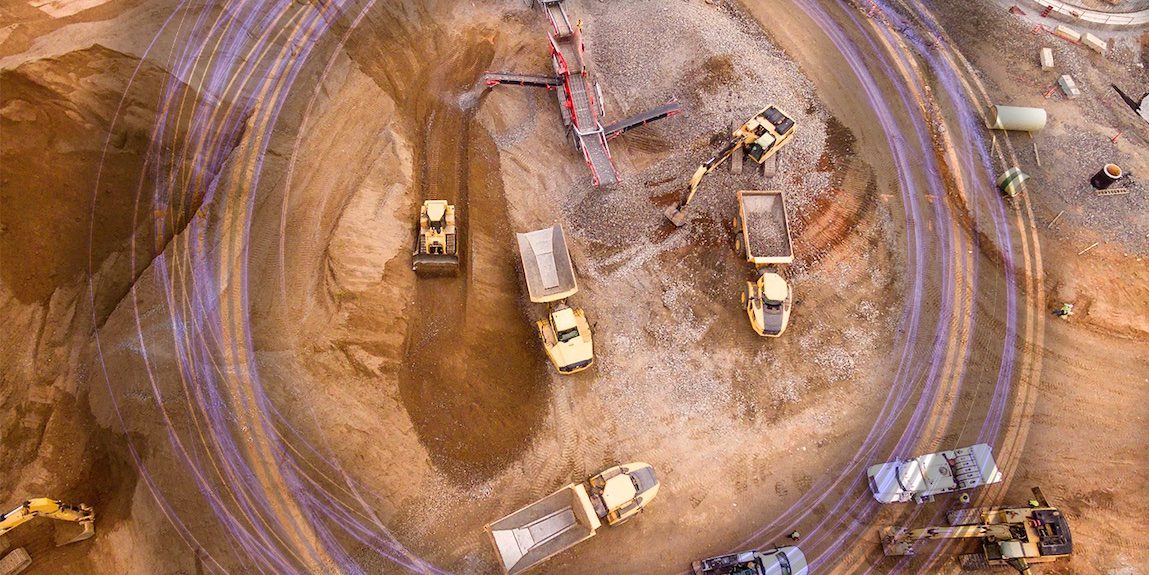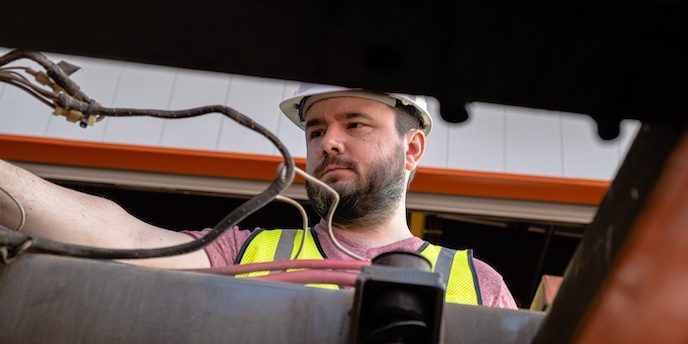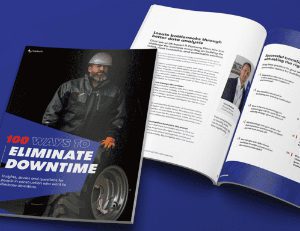

Global markets have suffered a succession of well publicized shocks, from Covid-19 to supply chain delays, shortages and price inflation affecting raw materials, components and finished goods. But legislation and stakeholder pressure on all sectors have in tandem increasingly demanded transparency regarding carbon emissions and sustainability.
The effects are being felt right across the broad spread of construction, from building materials cost increases to holdups in new equipment shipments. Heavy construction equipment is especially impacted. One Trackunit customer, with purchasing power of around $2 billion, states that Tier 1 OEMs will only allocate 1/3 of the machines his company wants to buy. And it is not a situation where they can simply change suppliers as all OEMs are in similar positions.
The squeeze on supply has flipped the market to the extent that equipment owners and rental companies are having to break entrenched concepts of acquisition, use and disposal and look to prolong the working life of machines as a way to mitigate shortages and increase sector resilience.
Whilst this change may be perceived as inconvenient and disruptive to existing business models, extended machine lifecycles are potentially a boon to the circular economy as well as contributing to the industry’s sustainability efforts.
According to the Ellen MacArthur Foundation, a charity dedicated to ending waste, the circular economy is based upon three principles: Eliminate waste and pollution, circulate products and materials at their highest value, and regenerate nature. “A circular economy,” it says, “decouples economic activity from the consumption of finite resources.”
‘The squeeze on supply has flipped the market to the extent that equipment owners and rental companies are having to break entrenched concepts of acquisition…’
Circularity calls into question what it calls the “take-make-waste” system, in particular the way that resources are managed, how products are manufactured and used, and what is done with component materials once goods are finished with.
LETI (formerly London Energy Transition Initiative), a voluntary network of over 1,000 built environment professionals, says a circular economy replaces the ‘end-of-life’ approach of the linear economy, with the adoption of concepts such as restoration and regeneration, the use of renewable energy, and the “elimination of waste through the design of materials, products and systems that can be repaired and reused.”
A Construct Connect blog says that on a global scale, construction is not only one of the largest users of energy and responsible for 38% of emissions, but also answerable for 30% of the extraction of natural resources in the world. To reduce its ecological footprint requires a shift to a circular economy to protect the environment and also benefit the local economy by encouraging more sustainable production models.
It singles out construction equipment reusability as one of five examples of circular economy solutions aimed at establishing a sustainable model of production and consumption. Before we get to reuse and second lives however, it’s important to remember the principle of extended lifecycle or “product life extension” is an important tenet of circularity.
For renters and owners used to simply returning construction equipment and machines at contracts’ end or trading them in as part-exchange for a replacement, condition and function take on a higher level of importance since the cost of maintenance, potential malfunctions and replacement parts are no longer problems being passed on to a new and unknown user.

With more and more instrumentation either built-in as standard or retrofitted to machines, an increasing amount of data is being gathered and analyzed for better forecasting of machine lifecycles. This generally has allowed more precision when planning replacements and the resale of currently owned stock.
However, the need to maintain machines and equipment beyond the usual churn cycle means data can be utilized differently. The older the machine, the more likely it is to fail and negatively impact downtime on a project. Data analysis is key to extending machine life, helping support longer-term spares’ planning necessary to avoid the double whammy of older machines needing more replacement parts and coupled with delivery time delays.
Data, for example, permits the creation of machine passports that provide a lifetime review of metrics including operating hours, fuel efficiency, maintenance/servicing and a variety of other characteristics unique to each piece of equipment. This record not only affects the machine’s current value to the business (total cost of ownership), it will also dictate the optimum time to resell or scrap it from the fleet. Data informs an organization of the value of its assets with real certainty.
Time after time, we learn that to fully mitigate risks, scenario planning must consider one disaster swiftly followed by another. At the beginning of 2019, no one was forecasting a global pandemic with a supply chain shutdown, geopolitical turmoil and a pending economic crash. Yet here we are.
Throughout this period, the task of building and rebuilding has and will continue. In today’s milieu, we need to stick to our task by making the most of our resources to eliminate waste and downtime. Well maintained and operated heavy machines, old and new, are part of the mix. Accessing and utilizing data from this equipment can help prolong fleet lifecycles to make the sector more resilient, at the same time minimizing additional cost of ownership and increasing our share in circularity.
For more use cases how data can eliminate downtime, read the Blueprint for data sharing in construction.

Never miss an insight. We’ll email you when new articles are published on this topic.


